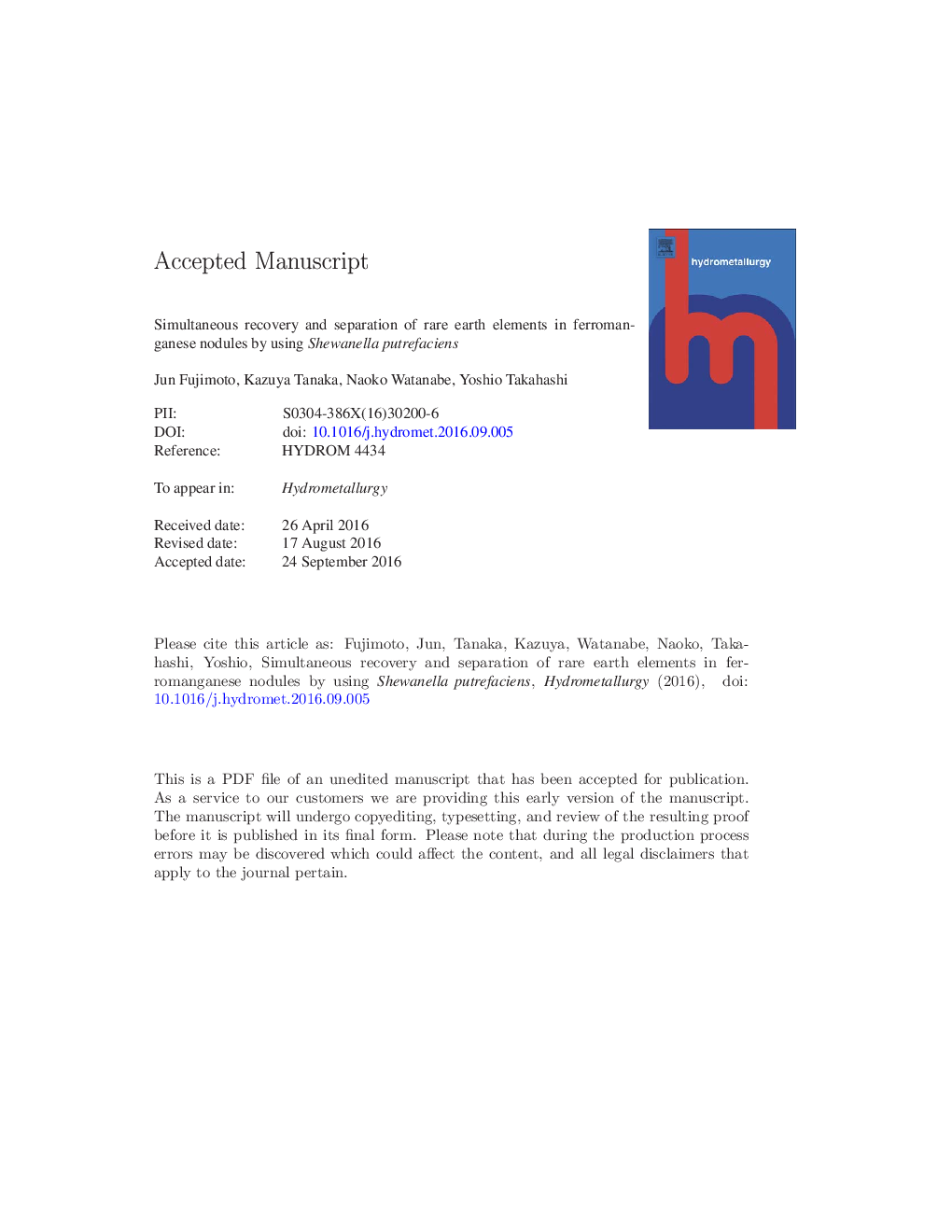| Article ID | Journal | Published Year | Pages | File Type |
|---|---|---|---|---|
| 4769045 | Hydrometallurgy | 2016 | 34 Pages |
Abstract
Rare earth elements (REEs) are used in various advanced materials including catalysts, alloys, magnets, optics, and lasers. REE resources are unevenly distributed around the world, which continues to cause geopolitical concerns. Thus, securing REE resources has become an important subject for the sustainable development of industry and society. In this study, we investigated ferromanganese (Fe-Mn) nodules and crusts as a REE resource because they contain high REE concentrations and are widely distributed on the seafloor in the Pacific Ocean. We examined recovery of REEs in Fe-Mn nodules by using Shewanella putrefaciens (Fe-reducing bacterium). In this method, Fe-Mn nodule decomposition and REE recovery were achieved simultaneously in a single solution system. Fe-Mn nodules were reductively decomposed in NaCl solution under anaerobic conditions with daily addition of sodium lactate as an electron donor. During the decomposition of Fe-Mn nodule, REEs released from the Fe-Mn nodule were adsorbed on bacterial cells. Light REEs had higher adsorption rates on bacterial cells than heavy REEs, which was possibly due to complexation with sodium lactate and carbonate produced by bacterial activity. Of the conditions studied here, the best REE adsorption rates were obtained with 0.5Â M NaCl solution at pHÂ 7 with daily addition of 1Â mmol sodium lactate. Most of the REEs adsorbed on the bacterial cells were recovered by leaching with 0.01Â M HCl. The reductive dissolution of Fe-Mn nodules using Fe-reducing bacteria is a promising environmentally friendly method for recovering REEs from Fe-Mn nodules and crusts.
Related Topics
Physical Sciences and Engineering
Chemical Engineering
Chemical Engineering (General)
Authors
Jun Fujimoto, Kazuya Tanaka, Naoko Watanabe, Yoshio Takahashi,
